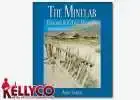I'll go ahead and say that it's not optimal for my area. The problems are the weather and the soil.
Weather: Here in the Pacific Northwet, it's overcast and usually raining for about 7-8 months out of the year. I don't restrict my outdoor activities to good weather because if I did, I wouldn't be doing much of them. Metal detecting is no exception. The E-Trac will handle a drizzle but in heavier rain, a cover of some sort is necessary. The problem is that this makes the already-bad screen even worse, and the poor level of backlighting (which my watch puts to shame) won't help. You're now flying blind. You can choose to go by sounds in 4TC and make some decent finds, but most of the public areas around here call for TTF. And as we all know, TTF without a screen is basically beep-and-dig. The trash-to-valuable ratio around here often is not favorable. I really don't like digging trash and I like it even less when I'm getting rained on. A bit of discrimination might help with that, which brings us to...
Soil: Ours seems to be similar in ferric content to a pile of iron shavings. If you're hunting in any discrimination pattern more restrictive than relic, most sites will have you nulling more than you're beeping. You won't dig up much trash that way...in fact, you won't dig up much of anything at all. I learned early on not to rely on auto-sense out here because the E-Trac will park itself on 15 or lower more often and not, and my 12" machine becomes something like a 6-7" machine. If I only wanted depth like that, I could have opted for a much less expensive machine. I've begun to just set it to 20 (or higher, on the rare occasion that I can get away with it) on manual and learned to ignore the resulting symphony, which I can do...but it does remove some of the enjoyment of the hobby, wandering around listening to the machine screeching at you like this. This level of iron contamination also raises hell with the target values, with the "typical" 12 coming in at anything from 10-16 regularly, occasionally a few points higher. It's always heart-breaking when a machine known for its accurate TID lies to you (particularly if it had been honest for the last two or three targets), but that's part of the game out here. At least I know that this soil is making everyone else's lives unpleasant too. And it helps me to maintain an appropriate swing speed - if I swing too fast, I WILL get an iron false, regardless of whether there's a target around or not. It's actually not uncommon for me to dig a good signal, remove a handful of dirt that sets the Propointer off, break up the clump of dirt, and find that the Propointer no longer sees it. Sweep the hole, another good signal, remove another handful, Propointer sees something...you get the picture. You can go all the way to the clay like this in some areas. It's downright depressing sometimes, and the E-Trac does not like this sort of dirt at all.
I'll admit that I represent a fairly small segment of detectorists, and one or both of these factors probably don't apply to most. For them, this is a wonderful machine. For me? It's merely very good. I've ordered something else to take over for it, at least during the spring, fall, and winter. My original plan had been to get rid of it but I simply can't - even in what is probably a worst case scenario for it, the environment that the folks in Australia never thought of and might not be able to imagine, it's still a very good machine.
And as I said earlier, it can detect the hell out of some worms.








